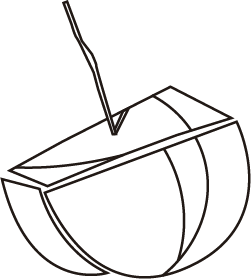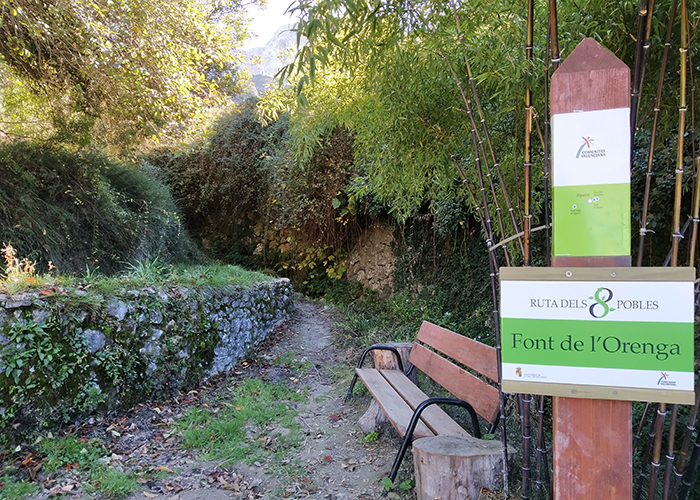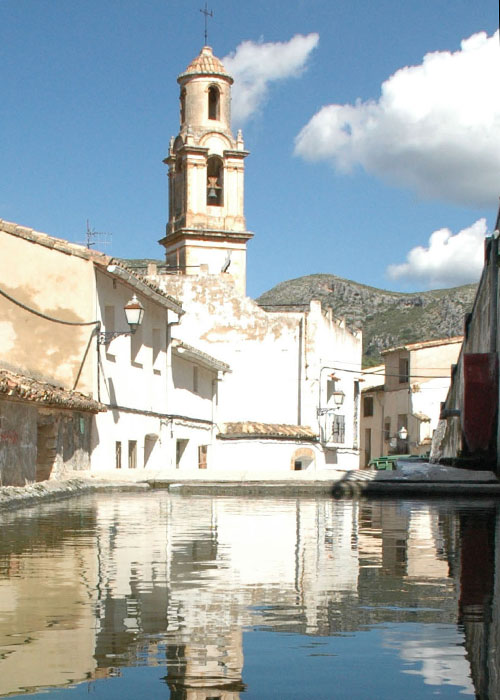THE SPRINGS
A spring is an emergence of water, a natural fountain that pours water from an aquifer to the outside, due to gravity. Usually the word “spring” refers to a place where there is a horizontal pipe through which the water exits the ground. If the water rises from the ground, that is, vertically, it is a vertical spring if there has been no previous excavation, and a well if the vein of water has been sought by digging in the ground vertically downwards.
Limestone rocks are a great storehouse for water, and clays and marl are impermeable. This is a good combination for the formation of aquifers and springs.
There are many springs in La Vall de Gallinera, more than sixty of which have been recorded. Some are permanent and can come to have a very large flow volume, and others only emerge after heavy rains and usually die down after a short period. Regarding some springs, only the name remains in the people’s memories, and the possible location because they have already disappeared. Most are on the shaded north-facing slope (L’Ombria), and only a few on the sunny south-facing slope (La Solana), within the ravines or next to the intermittent Gallinera River.
The best springs have always been used to irrigate fruit and vegetable orchards, and most have associated infrastructures which were designed for certain priority uses. The water outlet always fills a basin or tub made using a hollowed stone or masonry. This first pond is often elongated to make it easier for livestock to drink, and so it is transformed into a drinking trough. From there the water is canalised to a larger pond, often with the edges sloping towards the water so as to aid in the task of washing. Most springs near the villages have this part of the spring infrastructure well developed, and there is usually even a roof covering it, constructed in order to protect from bad weather the women who were washing clothes there. An order was always followed when using water: first the people, then the animals, then the cleaning, and finally for irrigation and, if necessary, to move the mechanisms of a mill. Irrigation shifts were carried out every fifteen to eighteen days, depending on the capacity of the ponds and the size of the area to be irrigated. In some cases, such as the spring called La Mata de Benirrama, several ponds allowed for separate laundry areas and the farthest from the spring was used to wash the clothes of sick people.
The La Mata de Benirrama spring is one of the springs with the greatest flow volume, but the washing places of Benialí, L’Alcúdia, Benissivà-Benitaia, La Carroja, Alpatró, Llombai and Benissili also have good flows. On the valley’s south-facing slope, the Llimener spring and the springs of the Basses del Racó ravine are named in accordance with the places where they are located. But there are many more: the Pudenta spring, the Cossis spring, L’Asbeurà, the Orenga spring, the Gascons’ spring or the Moragues spring; peculiar names related to one or another feature regarding the water or its surroundings, or related to the names of the former owners.







